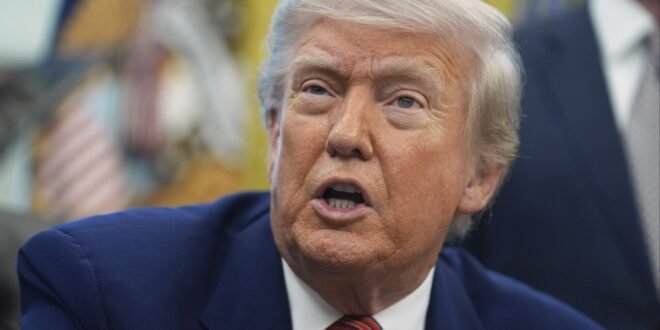Trump’s Tariff Strategy and Global Economic Uncertainty
US President Donald Trump has announced that he will extend the deadline for imposing “reciprocal” tariffs on numerous economic partners until August 1. This decision signals a shift in his approach, as he aims to maintain pressure on trading partners while keeping the potential for a trade war alive. The extension adds another layer of uncertainty to the global economy, with markets and businesses bracing for possible disruptions.
New Tariff Measures and Negotiation Tactics
In addition to extending the deadline, Trump has indicated plans to implement a 50% tariff on imported copper and to impose long-threatened levies on pharmaceuticals and semiconductors. These moves are part of a broader strategy to leverage trade negotiations, emphasizing the need for fair trade practices and protecting American interests.
Trump also highlighted improved relations with China, stating that he and Chinese President Xi Jinping have been in regular communication and that Beijing has been “very fair” on their trade deal. However, this claim is not without controversy, as previous assertions about calls with Beijing have not always been confirmed.
The Impact of Delayed Deadlines
The postponement of the original deadline came as the administration faced challenges in completing its “90 deals in 90 days” initiative. In response, Trump issued 14 unilateral letters, each with similar wording, threatening elevated tariffs on major trading partners like Japan and South Korea, as well as smaller economies such as Laos and Cambodia. These letters emphasize that tariffs will start being paid on August 1, with no extensions granted.
Despite this, Trump has suggested that the new deadline is “firm, but not 100 per cent firm.” He has indicated that if a better offer comes from trading partners, he might reconsider. This flexibility, however, does not seem to ease the concerns of international stakeholders.
Trade Pacts and Regional Developments
The European Union and Japan are reportedly close to reaching trade pacts with the US. Financial markets have even coined a term, “Taco,” for Trump’s pattern of threats followed by concessions. This dynamic has created a sense of unpredictability, with analysts noting that it could undermine trust among allies and affect global leadership.
Recent developments include agreements with Britain, China, and Vietnam. However, these deals are often seen as broad frameworks rather than detailed agreements. For instance, after a May deal with Britain, the 10% higher tariffs were considered a benchmark. China’s agreement to 30% higher tariffs was more complex due to the nature of US-China trade relations. Vietnam’s recent agreement to 20% higher tariffs, with 40% for Chinese goods transshipped through the country, has raised concerns about potential increases in average tariffs.
Economic and Political Implications
Trump’s tariff strategy is not just about trade; it also serves as a domestic political tool, aligning with his “America First” narrative. By imposing higher duties on imports, he aims to boost US manufacturing and protect domestic industries. However, this approach risks deepening mistrust among allies and eroding the interdependence that has characterized post-World War II global economics.
Analysts suggest that the average tariff levels might settle around half of Trump’s peak threats, given the initial tariff for Vietnam was 46%. Yet, predicting Trump’s next move remains challenging due to his reliance on intuition in decision-making.
Challenges and Concerns
The lack of detail accompanying the deals has led to misunderstandings and accusations. For example, the US-China agreement reached in Geneva in May quickly fell apart, requiring further high-level meetings. Similarly, details of some agreements only emerged later, such as the lifting of restrictions on sales to China by the Trump administration.
While Trump and his advisers claim that tariffs cost “nothing” and that foreign nations bear the burden, a JPMorgan Chase Institute study found that current tariff levels would add $82 billion in new costs for mid-sized firms, affecting a third of US private-sector jobs.
Looking Ahead
As negotiations continue, the White House is expected to announce headline deals focused on purchasing US products while deferring more complex issues like digital taxation and labor standards. This approach reflects Trump’s playbook of keeping allies off balance with shifting demands and public threats, followed by limited economic deals.
The ongoing uncertainty surrounding Trump’s tariff policies underscores the challenges faced by global economies and the need for careful navigation of trade relations in the coming months.
 Info Malang Raya Its All About World News
Info Malang Raya Its All About World News



